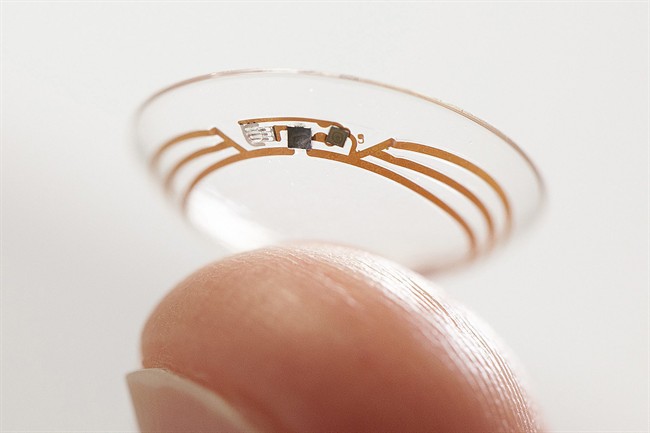TORONTO – Google has joined forces with Swiss pharmaceutical company Novartis to bring its contact lens glucose monitor to market.

First unveiled in January, the smart contact lens measures the glucose levels in users’ tears using a minuscule sensor and a wireless transmitter.
The prototype, which Google says will take at least five years to reach consumers, is one of several medical devices being designed by companies to make glucose monitoring for diabetic patients more convenient and less invasive than the traditional finger pricks.
READ MORE: Google unveils contact lens glucose monitor
“We are looking forward to working with Google to bring together their advanced technology and our extensive knowledge of biology to meet unmet medical needs,” said Novartis CEO Joseph Jimenez in a press release.
“This is a key step for us to go beyond the confines of traditional disease management, starting with the eye.”
Novartis’ eye care division Alcon will work with Google X lab to further develop the smart lens, which will use non-invasive sensors, mircochips and miniaturized electronics to operate within the eye.
Alcon will work to develop a commercial version of the contact lens.
- Canadian man dies during Texas Ironman event. His widow wants answers as to why
- ‘Sciatica was gone’: hospital performs robot-assisted spinal surgery in Canadian first
- Canadians more likely to eat food past best-before date. What are the risks?
- Treatment from female doctors leads to lower death rates, study finds
The pharmaceutical company not only wants to develop the technology for diabetic users – it also hopes to find a way to restore the eye’s natural focus on near objects and restore vision to far-sighted users.
Research on the contact lenses began several years ago at the University of Washington, where scientists worked under National Science Foundation funding.
READ MORE: Canadians eager for more virtual, mobile health care solutions
Other non-needle glucose monitoring systems are also in the works, including a similar contact lens by Netherlands-based NovioSense, a minuscule, flexible spring that is tucked under an eyelid. Israel-based OrSense has already tested a thumb cuff, and there have been early designs for tattoos and saliva sensors.
A watch-style monitor was approved by the FDA in 2001, but patients said the low-level electric currents pulling fluid from their skin was painful, and it was buggy.


Comments